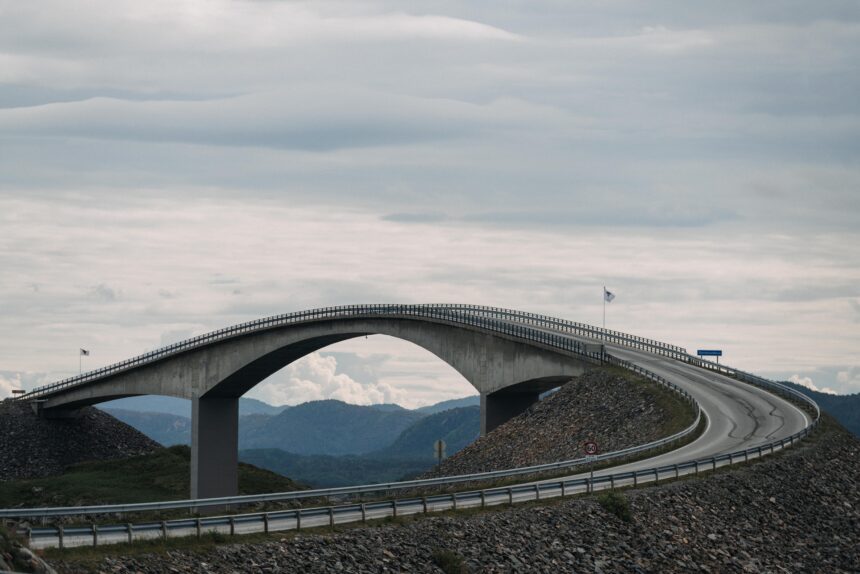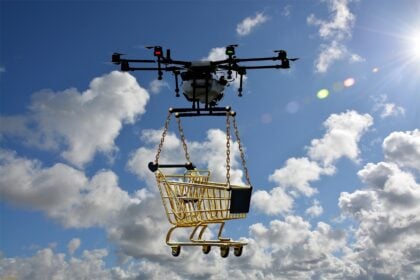If a bridge could talk, AI is the translator. From sensors to satellites, we’re turning raw vibrations into early warnings that keep people safe and cities moving.
The New Playbook for Infrastructure Safety 🧠
For decades, inspections were scheduled like dentist appointments: regular, necessary, and sometimes painful. Now, infrastructure safety is shifting from periodic checkups to continuous listening. Networks of sensors, camera-equipped drones, and machine learning models turn every bridge span, beam, and joint into a signal. The result: earlier alerts, targeted repairs, fewer lane closures, and better budget math.
From SHM to AI — What’s Actually New?
Engineers have monitored structures for years; the leap is how we analyze the data. If you need a quick primer on the underlying field, here’s what structural health monitoring is — the discipline that gathers vibrations, strain, and temperature signals and compares them over time.
Layer AI on top and you get pattern recognition that doesn’t blink. Instead of waiting for a crack to widen enough to see on a lift, models surface subtle deviations in frequency, amplitude, or thermal signatures that often precede visible defects. To keep this smart stack dependable, agencies are aligning with the NIST AI Risk Management Framework, which provides practical guardrails for governance, post-deployment monitoring, and documentation.
Government Signals: Standards Meet Street-Level Reality
Policy is catching up. Federal teams are publishing guidance that helps DOTs and city agencies translate research into field practices. One accessible snapshot is the FHWA guidance on AI-assisted bridge inspections — think of it as a bridge between machine learning research and bucket-truck reality.
A Redditor: “Models are cool, but the alert has to be actionable for field crews or it’s just noise.”
Sensors, Models, and Early Alerts — The Practical Stack ⚙️
The AI-enabled inspection pipeline isn’t magic; it’s a stack with three layers that feed one another.
The Data Layer (vibration, strain, thermal)
You can’t forecast what you can’t measure. Strain gauges, accelerometers, fiber optics, and infrared cameras capture how a structure moves through heat, cold, and load. For a concise overview, see SHM basics: sensors and data pipelines. The punchline: rich, continuous data lets models differentiate between normal “seasonal mood swings” and true red flags.
The Model Layer (patterns, anomalies, forecasts)
AI looks for “not like the others” moments. A mild change in a bridge’s natural frequency, or a new thermal hotspot around a bearing, may not alarm the human eye — but models flag it, prioritize it, and push it to dashboards. Then comes post-deployment monitoring — documenting how models behave over time, handling false positives, and clearly labeling human override paths per the NIST AI Risk Management Framework. This is where confidence intervals, thresholds, and work-order integrations turn math into maintenance.
An X user: “AI won’t replace engineers — it makes the checklist smarter and faster.”
Eyes in the Sky — Drones and Satellites for Risk Hotspots 🛰️
Traditional inspections can be slow and risky: lane closures, heavy lifts, long hangs under decks. Autonomous drones reduce exposure and make it feasible to capture more frequent, higher-resolution data.
Drone Fly-throughs Over Bridges
Modern craft can fly close to gusset plates and rivet lines, stabilizing themselves in GPS-challenged areas. They’re also getting better at navigating cluttered geometry and backlighting — a big deal under steel trusses. For context on how urban skies are getting smarter, check out smarter AI navigation for drone fleets. And because public agencies care about both speed and repeatability, drones that can retrace identical paths generate apples-to-apples datasets across months and seasons.
Cue the field footage: After your two-sentence hook, you saw the Skydio clip above. That’s the real-world workflow — a fast flythrough, dense captures, and algorithmic triage that reduces time on site while improving coverage.
Satellite Change Detection for Subtle Shifts
When you need the 10,000-meter view, multi-temporal satellite imagery helps identify land movement, subsidence, and slope instability threatening roads, pipelines, or rail. For agencies exploring playbooks, FHWA’s fact sheet outlines the promise and limits of computer vision in inspections — see the FHWA fact sheet on AI for inspections. Combined with ground sensors, these space-borne hints direct drones and crews exactly where to look.
A TikTok user: “Give me drones plus AI over lane closures any day if it keeps bridges safer.”
Case Files: Early Warnings That Change the Budget
Let’s talk results. Across agencies piloting these systems, the win isn’t just “catching cracks.” It’s prioritizing interventions before they snowball.
- Bridge hot-spotting: AI notices a subtle frequency shift on a midspan. The alert routes to the structural engineer of record, who verifies with a targeted in-person check. Instead of a blanket closure, the team installs temporary shoring and schedules an off-peak repair.
- Deck delamination mapping: Thermal and acoustic data, stitched by machine learning, reveal a mosaic of soft spots before they expand. The maintenance plan jumps from reactive patching to a phased resurfacing with cost certainty.
- Pavement risk scoring: On corridors battered by freeze–thaw cycles, models compute a risk index combining rutting, cracking, and drainage data — so crews hit the highest-risk lane segments first, not just the loudest complaints.
This is what infrastructure safety looks like when proactive beats reactive.
Human-AI Teaming — Engineers Still Call the Shots 🤝
AI can triage and prioritize, but human judgment is non-negotiable. A competent workflow shows who saw what alert, what decision they made, and why.
Interpreting Alerts, Prioritizing Repairs
Dashboards should make it easy to go from “anomaly detected” to “work order created.” When the model is unsure, it should say so. The AI RMF’s guidance on incident response and overrides clarifies how to design these decision pathways so engineers remain in control and can document rationales for audit and public transparency.
Budget Reality: Where to Start
Not every city can sensorize every span. That’s fine. Start with a risk-ranked pilot: pick a handful of bridges or corridors that see heavy load or harsh weather. Use FHWA’s playbook for integrating AI into asset assessments to define scope, data standards, and acceptance criteria. Bake in training for field teams and a feedback loop to reduce false alarms over time.
The Guardrails — Privacy, Cybersecurity, and Public Trust 🔒
Safety tech must also earn trust.
Data Minimization and Transparency
Collect only what you need, store it securely, and tell the public how it’s used. If your city is already exploring product-level transparency tools, you’ll recognize the pattern — see a practical look at data transparency. Publishing clear policies and model cards builds credibility with residents and oversight boards.
Securing the Pipeline
Inspection imagery and sensor streams are valuable. Treat them as such. Encrypt at rest and in transit, restrict access, and set up tamper-evident logs. For a structured checklist, map your controls to the risk controls across the AI lifecycle — from procurement to decommissioning.
What’s Next — Smart Corridors and Self-Reporting Assets 🚦
The endgame is continuous assurance: structures that “speak up” long before failure modes cascade.
From Inspections to Continuous Assurance
As sensors and models mature, inspections shift from episodic events to rolling assessments. The theory and tooling come from SHM — see core SHM concepts that enable continuous assurance — but now they’re fused with autonomous capture and cloud analytics.
Funding, Pilots, and Scaling Up
Federal reports outline paths to expansion, including data standards, model validation, and workforce upskilling. If you need a roadmap document to brief leadership, point them to FHWA’s research roadmap for AI in inspections. Pair that with a 12-month pilot that proves three things: fewer manual hours per structure, earlier defect detection, and a measurable reduction in unplanned closures.
Street-Level Playbook: How Cities Can Start This Quarter 🗺️
- Pick a corridor or cluster of bridges with known stressors (heavy truck volume, river crossings, or freeze–thaw).
- Define success metrics: inspection time saved, early-alert precision, reduced closures, and cost variance vs. traditional methods.
- Stand up the data layer: choose sensors for 2–3 critical components and a drone capture plan mirrored month to month.
- Run the model in “shadow mode” for 60–90 days to compare AI alerts with human findings before going live.
- Create the human-in-the-loop workflow: who reviews alerts, how they acknowledge, and how those become work orders.
- Communicate with the public: publish a dashboard explaining what’s measured, why, and how privacy is protected.
- Retrospective: after the pilot, cut what didn’t work, scale what did, and adjust procurement language so future contracts include data standards and override semantics.
Culture Shift: From Defect Hunting to Reliability Engineering
The biggest change isn’t the gadgetry; it’s mindset. Instead of “find the problem,” teams think “preserve performance.” That means celebrating near-misses caught early, not just dramatic fixes. It also means training: field crews learn to triage AI alerts, and data teams learn the reality of rebar, rust, and river spray.
A TikTok user: “My city’s new dashboard shows inspection routes and fixes. Kinda wild seeing potholes go from red to green in a week.”
FAQ: AI and Infrastructure Safety
Does AI actually prevent failures or just find them sooner?
Both. The value of AI in infrastructure safety is catching weak signals early and turning them into targeted maintenance before they cascade into closures or failures.
What’s the first step for a small city?
Start with a pilot on one bridge or a short corridor. Use the FHWA framework and the NIST AI RMF to shape procurement, then measure inspection hours saved and alert accuracy.
Is drone data secure?
It should be. Treat inspection media as sensitive: encrypt, restrict access, and follow documented controls aligned to the NIST AI RMF — all part of responsible infrastructure safety deployments.
How do you keep false alarms from wasting time?
Calibrate thresholds and run “shadow mode” where AI suggests alerts that humans verify. Over a few cycles, precision improves and alerts translate into infrastructure safety work orders more reliably.
Will AI replace human inspectors?
No. It reallocates time from looking everywhere to looking where it matters most. Engineers still interpret, approve, and sign off — AI just helps them get there faster.









